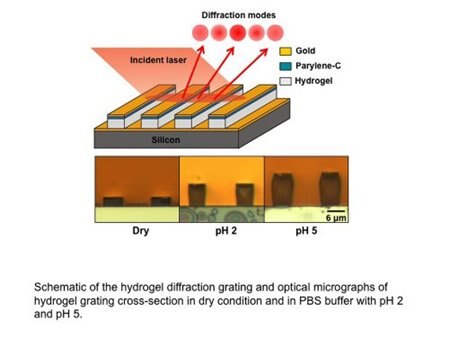Researchers set out to make a low cost and durable sensor with no moving parts. The result was the ‘diffraction-based’ sensor, made of thin stripes of a gelatinous material called a hydrogel, which expands and contracts depending on the acidity of its environment. "Recent research findings have demonstrated that the sensor can be used to precisely determine pH - a measure of how acidic or basic a liquid is - revealing information about substances in liquid environments," said Cagri Savran (pronounced Chary Savran), an associate professor of mechanical engineering at Purdue University. "The sensor's simple design could make it more practical than other sensors in development, " he said. The findings show thistech can be used in environmental water annalysis and bodily fluids. The flexible, water-insoluble hydrogel is formed into a series of raised stripes called a ‘diffraction grating’, which is coated with gold on both the stripe surfaces and the spaces in between. The stripes expand and contract depending on the pH level of the environment. The sensors work by analyzing laser light reflecting off the gold coatings. Reflections from the stripes and spaces in between interfere with each other, creating a ‘diffraction pattern’ that differs depending on the height of the stripes. For more information visit: http://www.purdue.edu/newsroom/research/2011/110208SavranSensors.html
Eavesdropper

